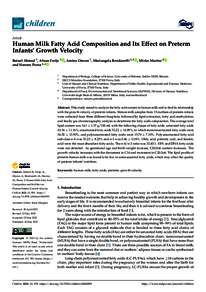Document
Comparison of fatty acid profile and mineral content of black mulberry (Morus nigra), white mulberry (Morus alba) and red mulberry (Morus rubra) grown in Bahrain
Linked Agent
Freije, A, Author
Kodikara, C, Author
Rondanelli, M, Author
Aqeel, E, Author
Zafar, W, Author
Albunni, H, Author
Merza, H, Author
Khonji, A, Author
Aljar, M, Author
Perna, S, Author
Title of Periodical
Applied Food Research
Country of Publication
Kingdom of Bahrain
Place Published
Sakhir, Bahrain
Publisher
University of Bahrain
Date Issued
2023
Language
English
Subject
English Abstract
ABSTRACT:
Mulberries are a rich source of many nutrients and have various health-promoting benefits. Nevertheless, their growth conditions can influence their nutritional composition and thus their benefits. Thus, this study examines the fatty acid profile and mineral content of three mulberry varieties: black (Morus nigra L.), white (Morus alba L.), and red (Morus rubra L.) grown in Bahrain for the first time. Fatty acid analysis, using gas chromatographyflame ionization detector (GC-FID), revealed that linoleic acid (C18:2n6) and palmitic acid (C16:0) were the primary fatty acids present in mulberry fruits, while minor fatty acids varied among the cultivars. Black mulberries exhibited a composition of 33.08 % saturated fatty acids (SFAs) and 66.92 % unsaturated fatty acids (UFAs), while red mulberries had 34.48 % SFAs and 66.52 % UFAs, and white mulberry had 27.15 % SFAs and 72.85 % UFAs. The mineral content analysis using inductively coupled plasma-optical emission spectroscopy (ICP-OES) revealed variations in the content of magnesium (Mg), iron (Fe), sodium (Na), potassium (K), and calcium (Ca) among the mulberry varieties. Black mulberries displayed the highest levels of Mg (706.67 mg/100 g), Fe (31.33 mg/100 g), Na (1406 mg/100 g), K (4161.33 mg/100 g), and Ca (1008.67 mg/100 g). Mulberries reported moderate levels of Mg (442.33 mg/100 g), Fe (45.6 mg/100 g), Na (635.68 mg/100 g), K (3278 mg/ 100 g), and Ca (583.1 mg/100 g). These findings indicate that black mulberries exhibit a superior mineral content across all parameters, whereas red mulberry has lower levels among the three varieties.
Member of
Identifier
https://digitalrepository.uob.edu.bh/id/2ce3ca5c-5685-4429-8411-5b2f544b471a
Same Subject
